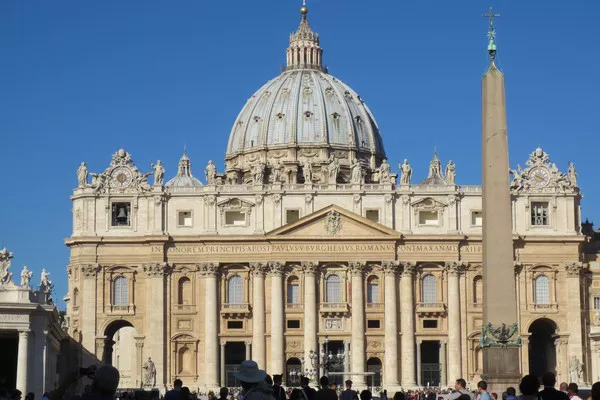Spain, with its rich history, diverse culture, and stunning landscapes, boasts a vibrant array of cities that captivate visitors and residents alike. From the bustling metropolises of Madrid and Barcelona to the historic charms of Seville and Valencia, Spain’s urban centers offer a blend of modernity and tradition. In this comprehensive guide, we delve into the 10 largest cities in Spain, exploring their unique characteristics, cultural attractions, economic significance, and historical heritage.
10 Largest Cities in Spain
1. Madrid:
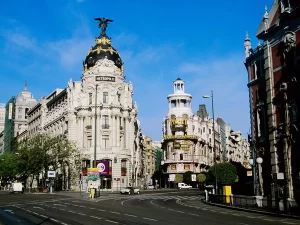
As the capital and largest city of Spain, Madrid serves as the political, cultural, and economic heart of the country. Renowned for its art museums, grand boulevards, and lively nightlife, Madrid exudes an infectious energy that draws millions of visitors each year. Key attractions include the Prado Museum, Royal Palace, Retiro Park, and Plaza Mayor. Additionally, Madrid is a major hub for finance, commerce, and international trade, contributing significantly to Spain’s economy.
2. Barcelona:
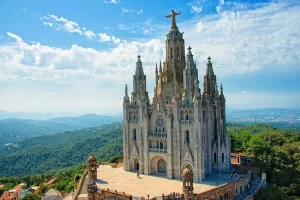
Situated on the northeastern coast of Spain, Barcelona is Catalonia’s capital and the country’s second-largest city. Famous for its distinctive architecture, including the iconic works of Antoni Gaudí, such as the Sagrada Familia and Park Güell, Barcelona seamlessly blends modernity with history. Visitors flock to attractions like La Rambla, Gothic Quarter, and Barceloneta Beach. The city’s vibrant cultural scene, culinary delights, and Mediterranean charm make it a perennial favorite among tourists.
3. Valencia:
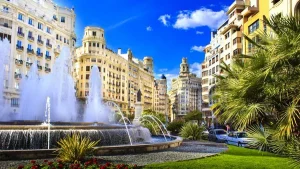
Nestled along the eastern coast of Spain, Valencia is renowned for its futuristic architecture, rich history, and lively festivals. The City of Arts and Sciences, designed by Santiago Calatrava, is a striking symbol of Valencia’s modernity, featuring futuristic structures like the Hemisfèric and Oceanogràfic. Visitors also flock to attractions like the Valencia Cathedral, La Lonja de la Seda, and the Central Market. Valencia’s vibrant culture, delicious cuisine, and beautiful beaches attract visitors from around the world.
4. Seville:
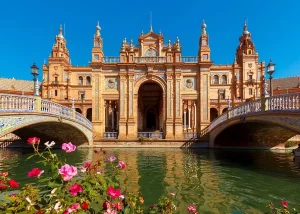
Steeped in history and tradition, Seville is the capital of Andalusia and one of Spain’s most enchanting cities. Its historic center, boasting landmarks like the Alcázar Palace, Seville Cathedral, and Plaza de España, exudes a timeless charm. The city is also famed for its flamenco music and dance, traditional tapas bars, and colorful festivals such as Semana Santa and Feria de Abril. Seville’s cultural heritage, architectural marvels, and vibrant atmosphere make it a must-visit destination.
5. Zaragoza:
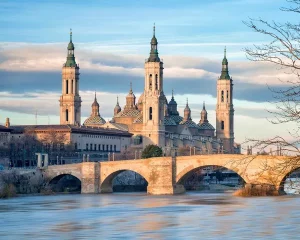
Located in northeastern Spain along the Ebro River, Zaragoza is the capital of the Aragon region and one of the country’s oldest cities. With a history dating back over 2,000 years, Zaragoza boasts a wealth of cultural attractions, including the Basilica of Our Lady of the Pillar, Aljafería Palace, and Goya Museum. The city’s strategic location has made it a crossroads of cultures, resulting in a diverse culinary scene, lively festivals, and a rich architectural heritage.
6. Málaga:
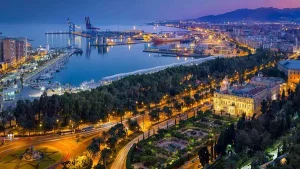
As the gateway to the Costa del Sol in southern Spain, Málaga is a vibrant coastal city renowned for its sunny climate, stunning beaches, and rich cultural heritage. Birthplace of the famed artist Pablo Picasso, Málaga boasts several museums dedicated to his life and work, including the Picasso Museum and Birthplace Museum. Visitors also enjoy exploring the Alcazaba fortress, Roman theater, and strolling along the bustling streets of the historic center. Málaga’s cosmopolitan atmosphere, Mediterranean cuisine, and scenic landscapes attract tourists from around the world.
7. Murcia:
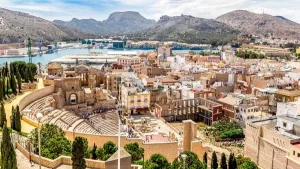
Nestled in the southeastern region of Spain, Murcia is the capital of the eponymous autonomous community and a city steeped in history and tradition. Its historic center features architectural gems like the Cathedral of Murcia, Real Casino, and the Glorieta. Murcia is also renowned for its rich culinary heritage, with traditional dishes such as zarangollo, michirones, and paparajotes delighting food enthusiasts. The city’s warm climate, cultural festivals, and picturesque landscapes make it a charming destination for visitors.
8. Palma de Mallorca:
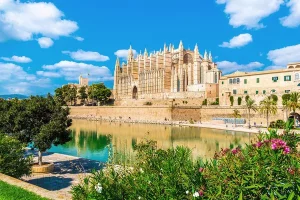
As the capital of the Balearic Islands in the Mediterranean Sea, Palma de Mallorca is a picturesque city known for its stunning beaches, historic architecture, and vibrant culture. The city’s crown jewel is the imposing Palma Cathedral, a Gothic masterpiece overlooking the waterfront. Visitors also enjoy exploring the narrow streets of the Old Town, shopping along the Paseo del Borne, and relaxing in the lush gardens of Bellver Castle. Palma de Mallorca’s scenic beauty, Mediterranean cuisine, and vibrant nightlife make it a popular destination for tourists seeking sun, sea, and culture.
9. Las Palmas de Gran Canaria:
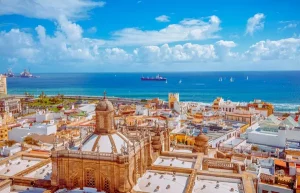
Located on the island of Gran Canaria in the Canary Islands, Las Palmas de Gran Canaria is a dynamic city known for its beautiful beaches, historic neighborhoods, and lively atmosphere. The city’s historic center, Vegueta, is a UNESCO World Heritage Site featuring architectural treasures such as the Cathedral of Santa Ana and Casa de Colón. Visitors also flock to the beachfront promenade of Las Canteras, where they can swim, surf, and soak up the sun. Las Palmas de Gran Canaria’s year-round warm climate, cosmopolitan vibe, and diverse cultural offerings make it a top destination for travelers seeking sun, sand, and relaxation.
10. Bilbao:
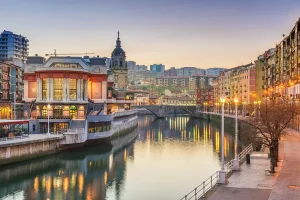
Situated in the Basque Country in northern Spain, Bilbao is a dynamic city renowned for its striking architecture, world-class museums, and vibrant culinary scene. The Guggenheim Museum Bilbao, designed by architect Frank Gehry, is a masterpiece of contemporary architecture and a symbol of the city’s cultural renaissance. Other notable attractions include the Casco Viejo (Old Town), Santiago Cathedral, and the iconic La Ribera market. Bilbao’s blend of tradition and modernity, along with its rich cultural heritage, make it a compelling destination for visitors seeking art, history, and gastronomy.
Conclusion:
Spain’s largest cities offer a rich tapestry of history, culture, and innovation, inviting visitors to explore their diverse attractions and experience their unique charms. From the bustling streets of Madrid and Barcelona to the historic treasures of Seville and Valencia, each city showcases Spain’s rich heritage and dynamic spirit. Whether you’re drawn to iconic landmarks, world-class museums, or vibrant culinary scenes, Spain’s urban centers promise unforgettable experiences and endless discoveries for travelers from around the world.
See Also: 15 Largest Cities In The World
You Might Be Interested In:












